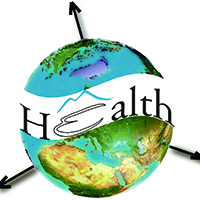Association between climate variables and dengue incidence in Nakhon Si Thammarat Province, Thailand

All claims expressed in this article are solely those of the authors and do not necessarily represent those of their affiliated organizations, or those of the publisher, the editors and the reviewers. Any product that may be evaluated in this article or claim that may be made by its manufacturer is not guaranteed or endorsed by the publisher.
Authors
The tropical climate of Thailand encourages very high mosquito densities in certain areas and is ideal for dengue transmission, especially in the southern region where the province Nakhon Si Thammarat is located. It has the longest dengue fever transmission duration that is affected by some important climate predictors, such as rainfall, number of rainy days, temperature and humidity. We aimed to explore the relationship between weather variables and dengue and to analyse transmission hotspots and coldspots at the district-level. Poisson probability distribution of the generalized linear model (GLM) was used to examine the association between the monthly weather variable data and the reported number of dengue cases from January 2002 to December 2018 and geographic information system (GIS) for dengue hotspot analysis. Results showed a significant association between the environmental variables and dengue incidence when comparing the seasons. Temperature, sea-level pressure and wind speed had the highest coefficients, i.e. β=0.17, β= -0.12 and β= -0.11 (P<0.001), respectively. The risk of dengue incidence occurring during the rainy season was almost twice as high as that during monsoon. Statistically significant spatial clusters of dengue cases were observed all through the province in different years. Nabon was identified as a hotspot, while Pak Phanang was a coldspot for dengue fever incidence, explained by the fact that the former is a rubber-plantation hub, while the agricultural plains of the latter lend themselves to the practice of pisciculture combined with rice farming. This information is imminently important for planning apt sustainable control measures for dengue epidemics.








